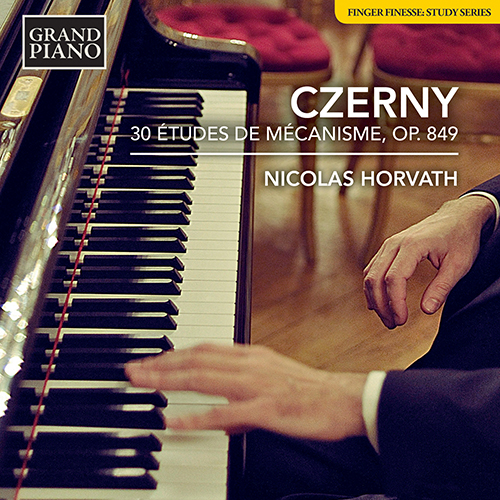
About this Release
“To many, Czerny's études are simple finger exercises. However, I've recorded these works in a virtuoso way, so that the études are not performed as mere technical drills, but more like real piano pieces, as if they were part of a musical corpus, such as Liszt's Album d'un voyageur. In doing so, the underlying musical subtlety in these études can really reveal itself as very charming music from the brilliant style, which was very fashionable during Czerny's time but has sadly fallen out of favour. I hope these simple études performed like virtuoso pieces will help listeners to appreciate this kind of music.” — Nicolas Horvath
CZERNY, CARL (1791–1857)
30 Studies of Technique, Op. 849
- Nicolas Horvath, piano
Carl Czerny, a student of Beethoven—whose music remained an inspiration—occupied an important place in the musical landscape of his time as both performer and pedagogue. His own students, such as Liszt, transmitted his teaching principles which were available in a large number of groundbreaking exercises and études.
Carl Czerny wrote his 30 Études de mécanisme, Op. 849 (‘30 Studies of Technique’) at a time of exceptionally high demand for teaching material. The Studies make use of a limited range of keys but are intended as an introduction for students to the ‘School of Velocity’. Perfectly placed between his simpler and more virtuosic Studies, Czerny’s Études have remained in demand to the present day.
This recording was made on a Steinway, Model C No. 248200 (1925)
Tracklist
|
30 Études de Mécanisme, Op. 849 () (00:49:00 )
|
|
1
No. 1 in C Major: Allegro (00:01:34)
|
|
2
No. 2 in C Major: Molto allegro (00:01:40)
|
|
3
No. 3 in C Major: Allegro non troppo (00:01:11)
|
|
4
No. 4 in C Major: Allegro (00:01:18)
|
|
5
No. 5 in C Major: Vivace giocoso (00:01:13)
|
|
6
No. 6 in C Major: Allegro leggiero (00:01:29)
|
|
7
No. 7 in C Major: Vivace (00:01:58)
|
|
8
No. 8 in C Major: Vivace (00:01:18)
|
|
9
No. 9 in F Major: Allegretto vivace (00:01:20)
|
|
10
No. 10 in F Major: Allegro moderato (00:01:46)
|
|
11
No. 11 in G Major: Molto vivace (00:01:32)
|
|
12
No. 12 in G Major: Allegretto animato (00:02:09)
|
|
13
No. 13 in B-Flat Major: Molto vivace e leggiero (00:02:25)
|
|
14
No. 14 in A Major: Molto vivace (00:01:33)
|
|
15
No. 15 in E Major: Allegretto vivace (00:01:29)
|
|
16
No. 16 in C Major: Molto vivace energico (00:01:25)
|
|
17
No. 17 in G Major: Vivace giocoso (00:01:43)
|
|
18
No. 18 in E-Flat Major: Allegro risoluto (00:01:28)
|
|
19
No. 19 in B-Flat Major: Allegro scherzando (00:01:29)
|
|
20
No. 20 in F Major: Allegro piacevole (00:01:33)
|
|
21
No. 21 in B-Flat Major: Allegro vivace (00:01:36)
|
|
22
No. 22 in E Major: Allegro (00:02:08)
|
|
23
No. 23 in A Major: Allegro comodo (00:01:35)
|
|
24
No. 24 in D Major: Allegro moderato (00:01:03)
|
|
25
No. 25 in D Major: Allegro en galop (00:01:41)
|
|
26
No. 26 in G Minor: Allegretto vivace (00:01:54)
|
|
27
No. 27 in A-Flat Major: Allegro comodo (00:01:43)
|
|
28
No. 28 in F Major: Allegro (00:01:34)
|
|
29
No. 29 in C Major: Molto allegro (00:00:37)
|
|
30
No. 30 in C Major: Molto vivace (00:01:24)
|
The Artist(s)
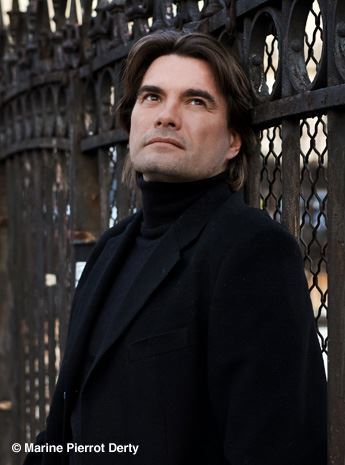 Nicolas Horvath began his music studies at Monaco’s Académie de Musique et de Théâtre Prince Rainier III and soon began to make an impression on a number of artists who would become his mentors. Aged 16 he caught the attention of the American conductor Lawrence Foster before coming to the notice of several distinguished international pianists, including Liszt specialist Leslie Howard. He is the recipient of numerous awards, including First Prize at both the Scriabin and the Luigi Nono International Competitions. He has become noted for hosting concerts of unusual length, sometimes lasting over twelve hours, such as the overnight performance of the complete piano music of Erik Satie at the Paris Philharmonie before a cumulative audience of 14,000 people. In 2019 he performed alongside Philip Glass at the same venue in a programme devoted to the American composer’s piano music. Horvath’s extensive and varied discography on Grand Piano includes the highly acclaimed Philip Glass solo piano music edition, Glassworlds; the complete piano works of Erik Satie; piano sonatas by the Estonian composer Jaan Rääts and music by the American experimental composer Alvin Lucier; Carl Czerny’s 30 Études; and lesser-known piano music by Claude Debussey, Anne-Louise Brillion de Jouy and Hélène de Montgeroult. Nicolas is a Steinway Artist.
Nicolas Horvath began his music studies at Monaco’s Académie de Musique et de Théâtre Prince Rainier III and soon began to make an impression on a number of artists who would become his mentors. Aged 16 he caught the attention of the American conductor Lawrence Foster before coming to the notice of several distinguished international pianists, including Liszt specialist Leslie Howard. He is the recipient of numerous awards, including First Prize at both the Scriabin and the Luigi Nono International Competitions. He has become noted for hosting concerts of unusual length, sometimes lasting over twelve hours, such as the overnight performance of the complete piano music of Erik Satie at the Paris Philharmonie before a cumulative audience of 14,000 people. In 2019 he performed alongside Philip Glass at the same venue in a programme devoted to the American composer’s piano music. Horvath’s extensive and varied discography on Grand Piano includes the highly acclaimed Philip Glass solo piano music edition, Glassworlds; the complete piano works of Erik Satie; piano sonatas by the Estonian composer Jaan Rääts and music by the American experimental composer Alvin Lucier; Carl Czerny’s 30 Études; and lesser-known piano music by Claude Debussey, Anne-Louise Brillion de Jouy and Hélène de Montgeroult. Nicolas is a Steinway Artist. The Composer(s)
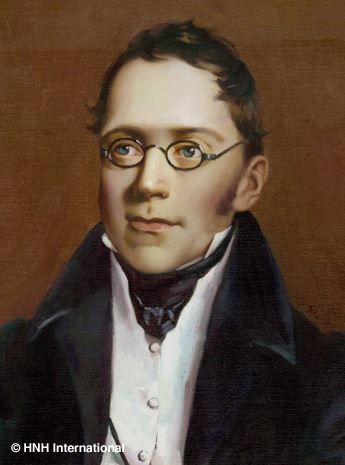 Carl Czerny owed much to his father, who trained him as a pianist and musician, concentrating particularly on the works of Bach, Mozart and Clementi. At the age of nine he played for Beethoven, who was happy to accept him as a pupil, his lessons relying in good part on Carl Philipp Emanuel Bach’s essay on keyboard playing, the Versuch über die wahre Art das Clavier zu spielen. In spite of the irregularity of these lessons, Czerny enjoyed Beethoven’s favour and found a continuing source of inspiration in his music, which remained at the heart of his own repertoire as a performer. Attempts to embark on an early career as an infant prodigy, a travelling virtuoso, were eventually abandoned, partly owing to the disturbed political and social events of the time and partly because, as Czerny later pointed out, of his lack of brilliance and showmanship, the element of charlatanry that seemed a necessary concomitant of such a career. With his careful father’s approval, he settled in Vienna primarily as a piano teacher, with pupils that over the years included the boy Liszt, who passed on Czerny’s teaching to a generation of virtuosi, and they, in turn, to their pupils.
Carl Czerny owed much to his father, who trained him as a pianist and musician, concentrating particularly on the works of Bach, Mozart and Clementi. At the age of nine he played for Beethoven, who was happy to accept him as a pupil, his lessons relying in good part on Carl Philipp Emanuel Bach’s essay on keyboard playing, the Versuch über die wahre Art das Clavier zu spielen. In spite of the irregularity of these lessons, Czerny enjoyed Beethoven’s favour and found a continuing source of inspiration in his music, which remained at the heart of his own repertoire as a performer. Attempts to embark on an early career as an infant prodigy, a travelling virtuoso, were eventually abandoned, partly owing to the disturbed political and social events of the time and partly because, as Czerny later pointed out, of his lack of brilliance and showmanship, the element of charlatanry that seemed a necessary concomitant of such a career. With his careful father’s approval, he settled in Vienna primarily as a piano teacher, with pupils that over the years included the boy Liszt, who passed on Czerny’s teaching to a generation of virtuosi, and they, in turn, to their pupils. Reviews
“A unique album, living up to the amazing challenges that Grand Piano and Naxos, as ever, risks.” – Bertrand Ferrier
“The pianist Nicolas Horvath, more often heard in contemporary music, interprets with care, such that musicality and technique are inseparable.” – ResMusica.com

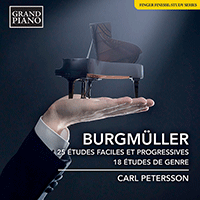
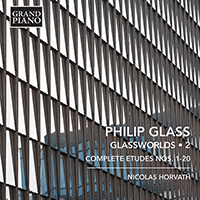
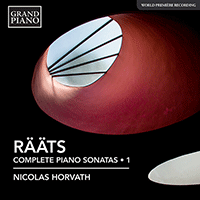
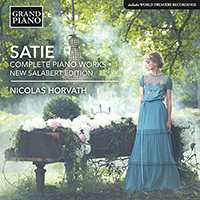
 Grand Piano has gained a reputation for producing high quality recordings of rare keyboard gems. Dedicated to the exploration of undiscovered piano repertoire, the label specialises in complete cycles of piano works by many lesser-known composers, whose output might otherwise have remained unknown and unrecorded.
Grand Piano has gained a reputation for producing high quality recordings of rare keyboard gems. Dedicated to the exploration of undiscovered piano repertoire, the label specialises in complete cycles of piano works by many lesser-known composers, whose output might otherwise have remained unknown and unrecorded.






